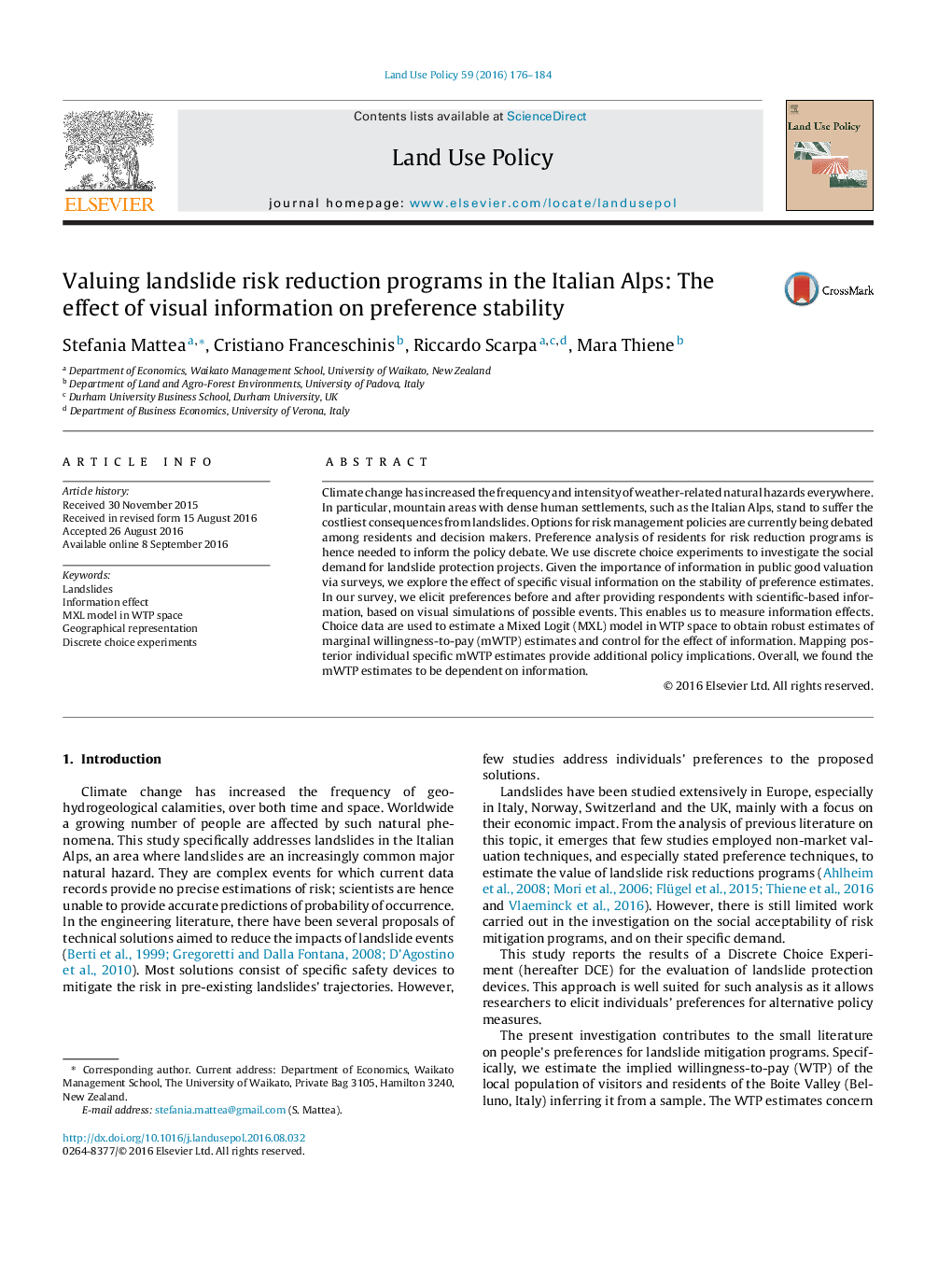| Article ID | Journal | Published Year | Pages | File Type |
|---|---|---|---|---|
| 6461499 | Land Use Policy | 2016 | 9 Pages |
â¢We evaluate policies to reduce landslide risk using a split sample survey.â¢Significant value increase is observed only for the policies for which information is provided.â¢Observed spatial heterogeneity of values across the region is mapped and evaluated.â¢Informing induces broader public intervention acceptance and support for public funding.
Climate change has increased the frequency and intensity of weather-related natural hazards everywhere. In particular, mountain areas with dense human settlements, such as the Italian Alps, stand to suffer the costliest consequences from landslides. Options for risk management policies are currently being debated among residents and decision makers. Preference analysis of residents for risk reduction programs is hence needed to inform the policy debate. We use discrete choice experiments to investigate the social demand for landslide protection projects. Given the importance of information in public good valuation via surveys, we explore the effect of specific visual information on the stability of preference estimates. In our survey, we elicit preferences before and after providing respondents with scientific-based information, based on visual simulations of possible events. This enables us to measure information effects. Choice data are used to estimate a Mixed Logit (MXL) model in WTP space to obtain robust estimates of marginal willingness-to-pay (mWTP) estimates and control for the effect of information. Mapping posterior individual specific mWTP estimates provide additional policy implications. Overall, we found the mWTP estimates to be dependent on information.
